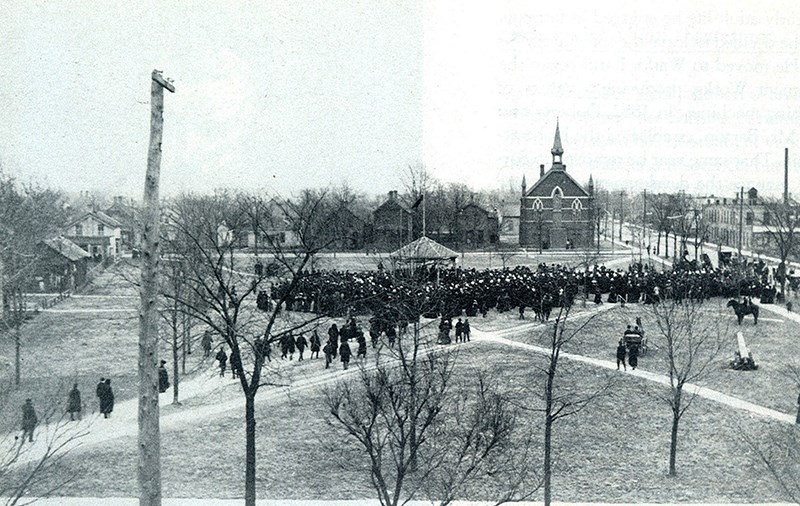Phil Egan
It has been an apartment building far longer than it was a church, yet it still has that faded hint of theology.
The glorious steeple is gone, the majestic grand windows have disappeared and satellite dishes now cling to its aged exterior. But, like many of Sarnia’s Victorian-era structures, it has a story to tell.
Smith’s Gazetteer notes that in 1846 there were five churches in Port Sarnia, belonging to the Episcopalians, the Catholics, the Presbyterians, the Methodists and the Congregationalists.
The original Congregational church can be seen in an 1871 photo by John Barron. The 200-seat structure was on Front Street where the Federal Building stands today. Its spire was removed in 1873, giving historians one more method of dating early Sarnia photographs.
By 1879, however, the first church was bursting at the seams and Rev. Thomas Lightbody began planning a larger one. On August 1, 1879, the cornerstone was laid for a new structure at Victoria and Wellington streets, overlooking Victoria Park. The new church opened on Jan. 7, 1881, seating 400 with another 50 seats in the gallery. It was 40’ x 60’ with a 25’ ceiling and had three large windows down each side.
Its pews were made of white ash trimmed with black walnut and the basement was fitted out as a lecture and schoolroom.
But the tide had turned. Some type of schism opened among churchgoers, through the details are sketchy. By 1895 the congregation had dwindled to a small number of families and a heated dispute broke out concerning the minister, a Rev. J.C. Madill.
Members were split, and the congregation barely survived a vote of 24-20 to close the church. Madill was suspended for one year by church authorities in Toronto and, the same year, he split from the group and started a new denomination of the church in Watford.
By 1905, the Sarnia congregation had folded and the once-proud church became a steam laundry.
On July of 1920 a sale by tender was announced offering the church building to interested parties. Information was available from the Sarnia law firm of Hanna, LeSueur and McKinley.
By the following January the building was promoted as the Victoria Apartments – “six entirely remodelled and modernized” units. “Each apartment has been repainted, repaired and redecorated, and presents a cheerful and homelike appearance,” readers were told, “close to street cars and the city and opposite Victoria Park.”
Today, as the building approaches its 140th birthday it remains one of the city’s historic structures, though much changed from its former glory.
